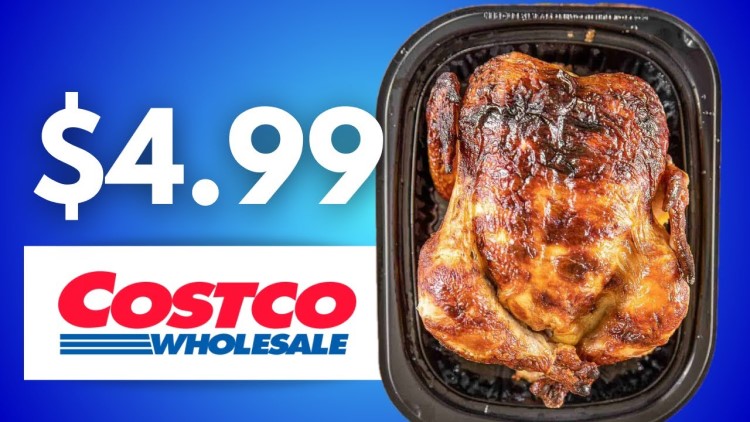In the competitive world of retail, businesses continually seek innovative ways to attract customers and boost sales. One such strategy that has proven effective over time is the use of a Loss Leader. By offering certain products at a loss, retailers can draw in customers who, once inside the store or on the website, are likely to purchase additional items at full price. Understanding this strategy and how to implement it effectively can be a game-changer. It’s especially effective for businesses looking to increase foot traffic, enhance customer loyalty, and drive overall sales growth.
What is a Loss Leader?
A business sells a Loss Leader at a price below its market cost to stimulate other profitable sales. The primary goal of this strategy is not to make a profit on the Loss Leader itself but to entice customers into making additional purchases. The theory behind this strategy is that once customers are in the store or on the website, they will be more likely to buy other items that are not discounted. By doing so, they offset the loss incurred on the initial product.
For example, a grocery store might sell a popular item like milk or bread at a price lower than the cost of production. Customers drawn in by the low price may then purchase other higher-margin items, such as snacks, beverages, or household goods. In this way, the Loss Leader acts as a lure. It does this by bringing customers into the store and encouraging them to spend more than they initially planned.
The Psychology Behind the Loss Leader Strategy
The effectiveness of the Loss Leader strategy is rooted in consumer psychology. One of the key principles at play is the concept of perceived value. When customers see a product being offered at an exceptionally low price, they perceive it as a great deal. This perception of value can create a sense of urgency. This motivates customers to take advantage of the offer before it disappears. In doing so, they may be more likely to make additional purchases to “capitalize” on the savings.
Another psychological factor is the concept of reciprocity. When customers perceive that a retailer is offering them a valuable deal, they may feel a sense of obligation to reciprocate by making additional purchases. This is particularly true if the Loss Leader is a product that the customer genuinely needs or values. By using a Loss Leader, businesses can tap into this psychological trigger. This encourages customers to spend more than they initially intended.
Additionally, this strategy can help build customer loyalty. When customers know they can consistently find great deals at a particular store, they are more likely to return in the future. This repeat business can be particularly valuable. Retail stores know that loyal customers spend more over time. The are also more likely to recommend the store to others.
Practical Applications of the Loss Leader Strategy
The Loss Leader strategy is widely used across various retail sectors. It’s used in supermarkets and electronics stores to online marketplaces and automotive dealerships. One common application is in grocery stores, where essential items like milk, eggs, or bread are sold at a loss to attract shoppers. Once in the store, customers often purchase other items with higher profit margins, such as specialty foods, household goods, or personal care products. This approach not only increases sales but also enhances customer satisfaction by offering perceived value.
In the electronics industry, retailers frequently use Loss Leaders to attract customers to high-ticket items like televisions, laptops, or gaming consoles. For example, a store might offer a popular video game at a significantly reduced price, knowing that customers are likely to purchase additional accessories, warranties, or other electronics at full price. This strategy not only drives immediate sales but also helps build long-term customer relationships by offering value on sought-after products.
Online retailers also employ the Loss Leader strategy to increase traffic and conversions. For instance, an e-commerce site might offer free or heavily discounted shipping on specific products, encouraging customers to add more items to their cart to take advantage of the deal. This approach can be particularly effective during peak shopping seasons, such as Black Friday or holiday sales, when consumers are actively seeking deals.
The automotive industry also utilizes Loss Leaders to drive showroom traffic. Car dealerships might advertise a particular model at a low price, even at a loss, to attract potential buyers. Once customers are in the showroom, sales staff can upsell higher-margin vehicles, add-ons, or financing options. This strategy not only increases the likelihood of making a sale but also enhances the dealership’s reputation as a place to find great deals.
The Benefits of Using a Loss Leader
While the Loss Leader strategy offers several benefits, it is not without risks. One of the primary advantages is increased foot traffic or website visits. By offering a compelling deal on a popular product, businesses can draw in customers who might not have otherwise visited the store or website. This increase in traffic can lead to higher overall sales. Customers are likely to purchase additional items at full price.
Another benefit is the potential for building customer loyalty. When customers perceive that a retailer consistently offers valuable deals, they are more likely to return for future purchases. This repeat business can be particularly profitable. Loyal customers tend to spend more over time and are more likely to spread positive word-of-mouth recommendations.
Potential Risks
However, there are also risks associated with the Loss Leader strategy. One potential risk is the possibility of attracting “cherry pickers”—customers who only purchase the Loss Leader product and nothing else. These customers may not provide the additional sales needed to offset the loss, resulting in a net negative impact on profitability. To mitigate this risk, businesses must carefully select Loss Leaders that complement higher-margin products or services, encouraging customers to make additional purchases.
Another risk is the potential for devaluing the brand. If a business relies too heavily on Loss Leaders, customers may begin to associate the brand with low prices rather than quality or value. This can erode brand equity over time and make it difficult to justify higher prices on other products. To avoid this, businesses should use the Loss Leader strategy selectively.
Moreover, the Loss Leader strategy may lead to price wars with competitors. If other businesses respond by lowering their prices to match or undercut the Loss Leader, it can result in a race to the bottom, with all parties suffering reduced margins. To prevent this, businesses should carefully monitor the competitive landscape and be prepared to adjust their strategy as needed.
How to Implement a Loss Leader Strategy Effectively
For businesses looking to implement a Loss Leader strategy effectively, it is important to start by selecting the right product. The ideal Loss Leader is a product that is in high demand. It should also appeal to a broad customer base and complement other higher-margin products or services. By choosing a product that aligns with these criteria, businesses can maximize the likelihood of driving additional sales and ROI.
Next, businesses should carefully plan the promotion of the Loss Leader. This includes determining the duration of the promotion, setting clear pricing goals, and developing a marketing strategy to attract customers. It is also important to consider the logistics of stocking and replenishing the Loss Leader product. This is to ensure that it is readily available throughout the promotion.
Additionally, businesses should track and analyze the results of the Loss Leader strategy to assess its effectiveness. Key metrics to monitor include foot traffic or website visits, average transaction value, and overall sales growth. By analyzing these metrics, businesses can determine whether the Loss Leader strategy is driving the desired outcomes and make adjustments as needed.
Finally, businesses should consider the long-term implications of using a Loss Leader strategy. While it can be an effective tool for driving short-term sales, it is important to balance this approach with other strategies that focus on building brand value, enhancing customer loyalty, and maintaining profitability. By integrating the Loss Leader strategy into a broader marketing and sales plan, it can be very effective.
Conclusion
The Loss Leader strategy is a powerful tool that can drive traffic, increase sales, and build customer loyalty. By understanding the psychology behind the Loss Leader and implementing it effectively, businesses can create a compelling value proposition that attracts customers and encourages them to make additional purchases. However, it is important to use this strategy carefully. Consider the potential risks and ensure that it aligns with the overall brand strategy. When executed well, the Loss Leader can be a valuable component of a comprehensive marketing plan.


